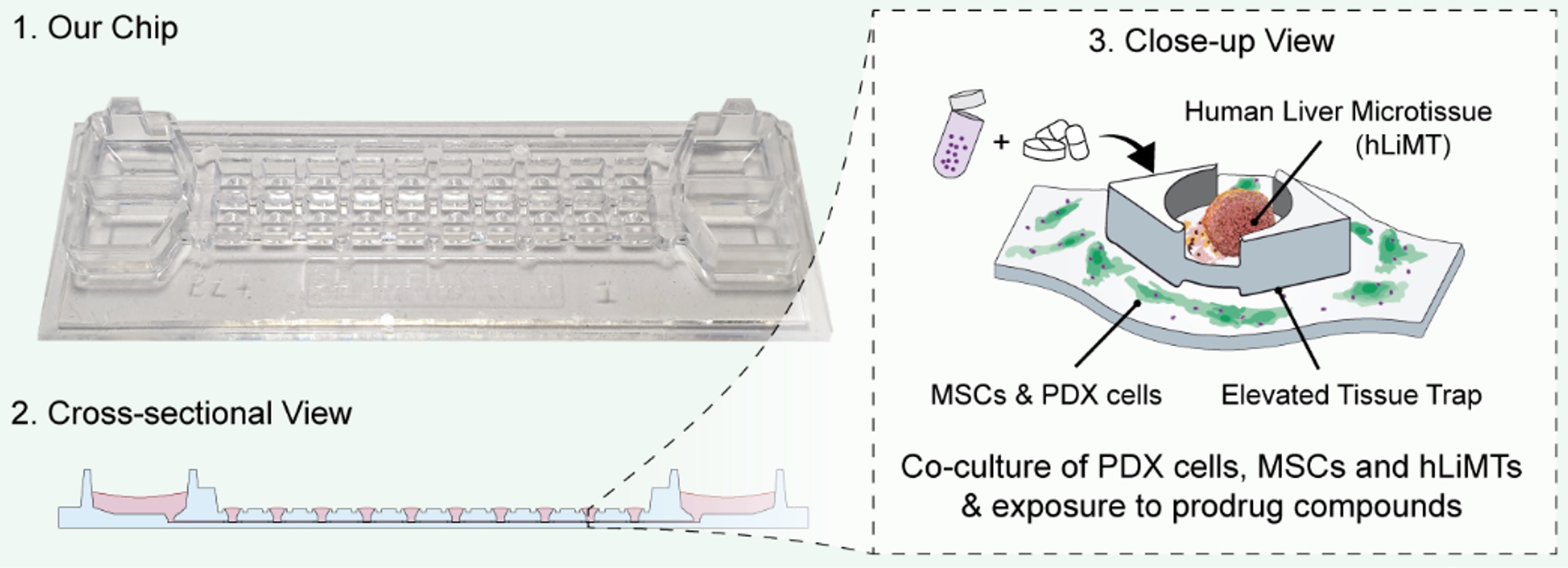Advanced drug-testing platform for leukaemia
Although survival rates of pediatric leukaemia patients have increased over the past decades, there is still a demand for effective and tailored treatments of certain types of leukaemia in high-risk patients. A new microphysiological drug-testing platform developed by Furkan Gökce and colleagues from the Hierlemann lab now enables the controlled interaction of potential drug candidates with cancer cells, human bone marrow cells and liver micro tissues within the same microfluidic system.

““Our chip allows for simultaneous testing of potential drug candidates with different patient-derived cells and tissues that play a key role in developing personalized cancer treatments. With our system, we try to closely mimic interactions that occur in a human body.””Andreas Hierlemann, head of the Bio Engineering Laboratory, D-BSSE, ETH Zurich
Find original article in Advanced Healthcare Materials:
Furkan, G, A Kaestli, Ch Lohasz, M de Geus, H-M Kaltenbach, K Renggli, B Bornhauser, A Hierlemann, and M Modena (2023) external pageMicrophysiological drug-testing platform for identifying responses to prodrug treatment in primary leukemia. Advanced Healthcare Materials, https://doi.org/10.1002/adhm.202202506.
Learn about research in the Bio Engineering Lab led by Andreas Hierlemann.
